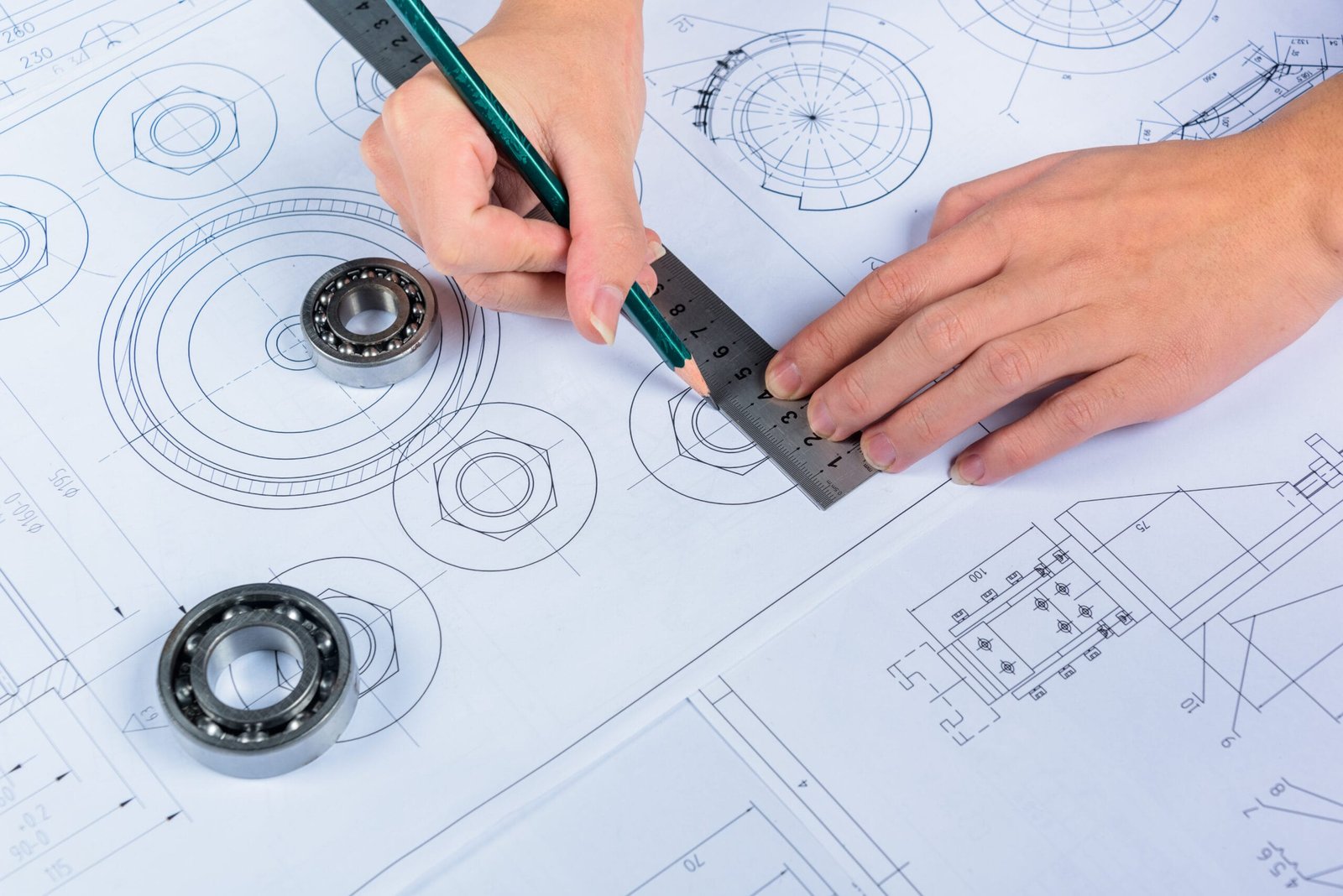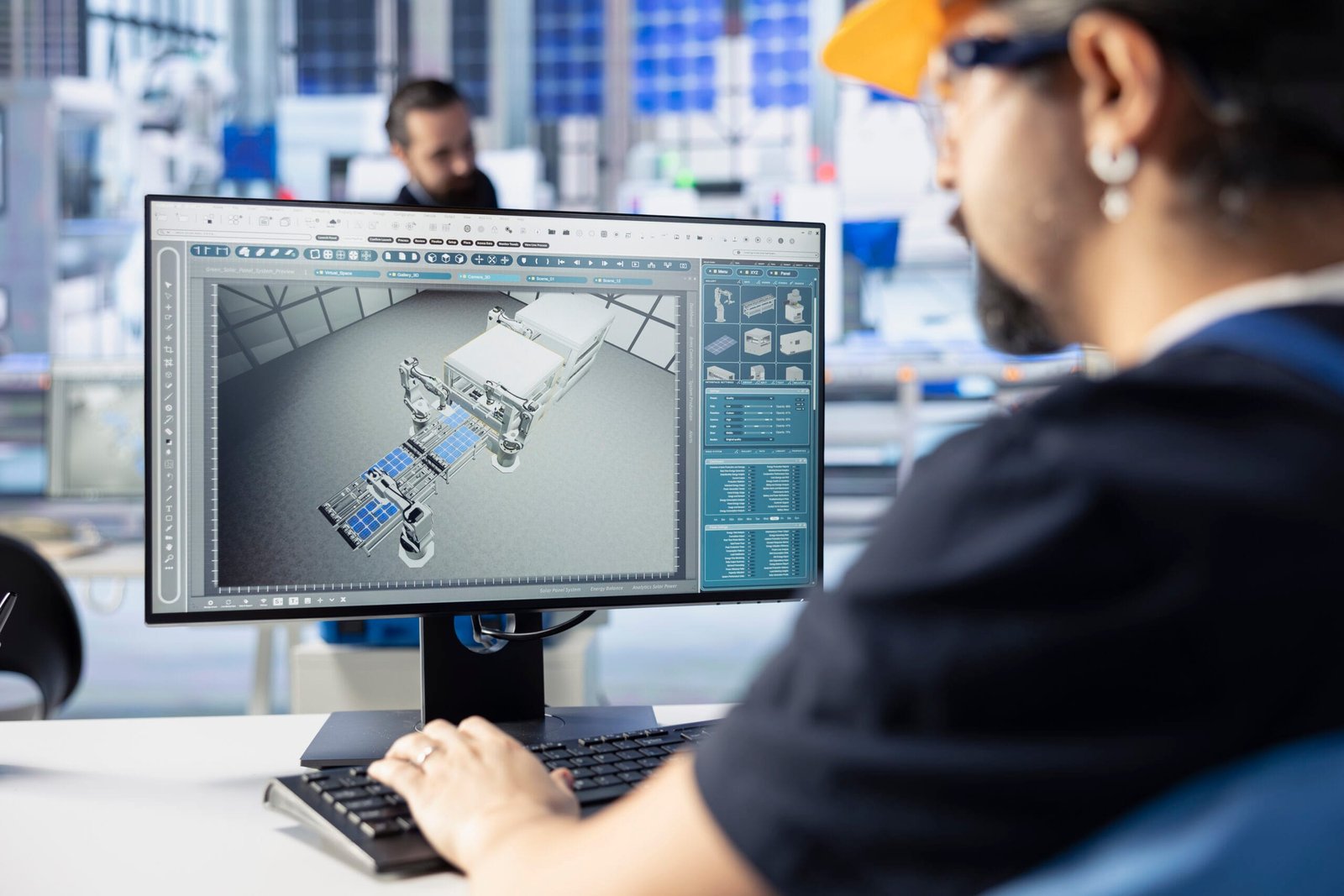Description:
Discover the power of Rendering Mechanical CAD Files for DesignHok projects. Learn how visualizing 3D models with high-quality rendering enhances design accuracy, communication, and client satisfaction. This blog covers the tools, techniques, and benefits of mechanical CAD rendering in 1000 words, plus a helpful FAQ section.
Introduction
In the world of Rendering Mechanical CAD Files, precision is everything. From conceptual sketches to complex assemblies, every component must be engineered with accuracy and clarity. At DesignHok, where we specialize in mechanical design, 3D modeling, and rendering, visualizing CAD files through high-quality rendering is an essential part of our workflow. Rendering mechanical CAD files transforms raw 3D models into photorealistic visuals, offering a powerful way to present, evaluate, and improve designs.
Whether you’re creating a new product prototype or visualizing a plant system layout, mechanical CAD rendering adds immense value to every stage of the design process. This blog explores how DesignHok approaches rendering mechanical CAD files, the tools we use, and why it’s a game-changer in mechanical engineering.
What Is Rendering Mechanical CAD Files?
Rendering Mechanical CAD Files refers to the process of generating realistic images from 3D models created in software like SolidWorks, AutoCAD, Inventor, Fusion 360, or Creo. While CAD files primarily serve engineering and manufacturing purposes, rendering allows designers to add textures, lighting, materials, and environmental context to create lifelike images.
This process is particularly useful for:
- Presentations to clients and stakeholders
- Marketing and promotional materials
- Design validation and concept evaluation
- Technical documentation with visual clarity
At DesignHok, rendering brings our mechanical projects to life, bridging the gap between technical accuracy and visual storytelling.
Importance of Rendering Mechanical CAD Files Design Projects
1. Enhanced Visualization
Rendering Mechanical CAD Files designs are often complex, especially when dealing with intricate assemblies or plant systems. High-quality renderings allow stakeholders to see the design in a realistic environment before any physical prototype is built. This reduces misinterpretations and enhances understanding among team members and clients.
2. Improved Communication
Engineers, clients, marketers, and manufacturers all speak different “languages.” Rendering acts as a universal visual language that bridges the gap. With detailed and realistic images, everyone involved can visualize the end product clearly and provide meaningful feedback early in the process.
3. Design Validation
Renderings can reveal aesthetic flaws or design inconsistencies that might be missed in a wireframe or shaded CAD model. Designers can simulate lighting, shadows, and material reflections to see how a product would perform visually in real-world conditions.
4. Client Engagement and Buy-In
A rendered image is far more compelling than a technical blueprint. When clients see a high-quality visual representation of their product or plant design, they’re more likely to feel confident and invested in the project. This leads to quicker approvals and stronger client relationships.
Tools and Software Used at DesignHok
At DesignHok, we combine powerful CAD platforms with industry-leading rendering tools to achieve the highest visual quality. Our workflow often includes:
- SolidWorks Visualize: Ideal for photorealistic rendering of parts and assemblies. Offers advanced lighting and animation features.
- KeyShot: Fast and user-friendly rendering engine known for real-time rendering and drag-and-drop material assignment.
- Autodesk 3ds Max: Used for high-end rendering projects that require detailed environmental scenes.
- Blender: An open-source alternative with powerful rendering engines like Cycles and Eevee, suitable for animations and complex visuals.
- Fusion 360 Rendering: Seamlessly integrated for Autodesk users, offering cloud-based rendering options.
These tools help us turn 3D CAD data into stunning visual outputs that enhance the design process at every stage.
Rendering Mechanical CAD Files Workflow at DesignHok
Here’s a simplified overview of how we approach rendering mechanical CAD files:
1. Import Rendering Mechanical CAD Files
The first step involves importing the 3D model into the chosen rendering software. We ensure all geometry is clean and optimized to avoid any rendering errors.
2. Assign Materials and Textures
Materials like metal, plastic, glass, and rubber are applied based on the component’s function and appearance. Texture maps add realism to surfaces, mimicking real-world characteristics like roughness or glossiness.
3. Setup Environment and Lighting
Lighting plays a critical role in rendering. We simulate realistic lighting conditions—sunlight, artificial lights, or HDRI environments—to reflect how the product will look in its actual setting.
4. Camera Angles and Background
Strategic camera positioning highlights the product’s best features. The background is customized to match the context—industrial, neutral studio, or on-site installation mockups.
5. Rendering and Post-Processing
Once everything is set, the image is rendered in high resolution. Post-processing using software like Photoshop may be used to enhance contrast, sharpness, and color accuracy.
Common Mechanical Rendering Projects at DesignHok
DesignHok serves various industries, and our rendering services are tailored accordingly:
- Product Prototypes: Visualizing new devices or tools before physical production
- Mechanical Assemblies: Showcasing internal components and exploded views
- Industrial Equipment: Presenting plant machinery in realistic operational environments
- HVAC and Piping Systems: Detailing layouts with annotations and flow visuals
- Technical Manuals: Creating visuals that supplement written instructions or specifications
Each project benefits from the realism and precision that rendering adds to the CAD data.
Benefits for Clients Working with DesignHok
When clients choose DesignHok for their mechanical CAD rendering needs, they gain:
- Faster approvals with visual clarity
- High-quality images for marketing and proposals
- Reduced risk of design errors
- Stronger collaboration between engineering and non-technical teams
- Access to top-tier CAD and rendering tools
Conclusion
Rendering Mechanical CAD Files is more than just adding visual polish—it’s a strategic tool that enhances clarity, communication, and confidence throughout the design and development process. At DesignHok, we harness the power of rendering to bring mechanical designs to life. From concept to completion, our team ensures every visual tells a story of precision and innovation.
If you’re looking to present your mechanical project in the best possible light, rendering is the key—and DesignHok is your trusted partner for achieving visual excellence.
FAQs
Q1: What is the difference between CAD modeling and CAD rendering?
A: CAD modeling is focused on creating 2D or 3D geometry for engineering and manufacturing. CAD rendering turns these models into realistic images by adding lighting, textures, and materials for visualization purposes.
Q2: Why should I render my mechanical CAD files?
A: Rendering helps visualize the product in real-world conditions, enhances communication with stakeholders, and improves overall project presentation and approval rates.
Q3: How long does it take to render a mechanical model?
A: It depends on the model’s complexity and the desired resolution. Simple parts may take a few minutes, while large assemblies or animations may require several hours.
Q4: Can DesignHok handle large industrial rendering projects?
A: Yes, we specialize in rendering for industrial equipment, plant layouts, piping systems, and complex assemblies using advanced tools like KeyShot, SolidWorks Visualize, and 3ds Max.
Q5: What file formats do you accept for rendering projects?
A: We accept formats from major CAD software including .SLDPRT, .STEP, .IGES, .STL, and .DWG. We ensure proper conversion and optimization for rendering purposes.





